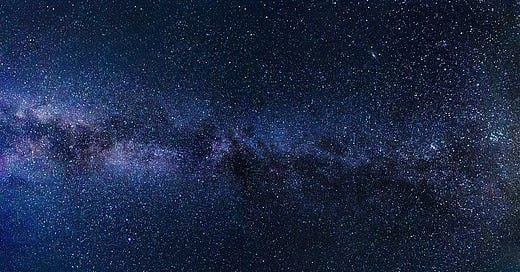Have you ever been to a local park and seen an empty pavilion and thought: I’d love to see community dances freely offered and regularly held here?
I mean: there’s many park pavilions scattered across the Simcoe region and yet many of these spaces tend to stand silent—save for the occasional reunion BBQ booking. They are so ready to be filled with festive potential for ongoing, multigenerational, communal connection, in every season, all year long.
‘Dancing together in parks all year long’ might not seem like high priority climate action—and yet…Maybe something that builds community resilience and cohesion and lifts spirits could be helpful right now, for various reasons?
One of which is that we’re likely going to need that resilience and cohesion and strong sense of spirit as we enter deeper into communal climate adaptation.
Because, well, and perhaps you already know this, but I’ll say it again for those in the back (and for others like me, who need this repeated so that it gets more integrated): it’s here.
It keeps taking me time to feel this deeper than the surface level, which is an indicator of my privilege and location, and also suggestive of how hard it can be to emotionally grapple with this, even for those like me who speak about climate impacts, a lot.
It’s here.
Meaning, the ‘prevention’ of the climate emergency is not the issue anymore. Rather, we are dealing with the mitigation of, and adaptation to, the climate crisis as it arises right now.
Right now.
When I started in the activism realm, it was the 90s, aka the ‘CD’ era. The Compact Disc Era. I had ‘ABBA Gold’ on CD. But Sarah McLachlan’s ‘Fumbling Towards Ecstasy’ was still on cassette tape. (Yes, I had a CD/tape cassette deck combo player!)
I spent a good portion of the 90s in Vancouver, and, while there, I started what was to be a long journey advocating for social and ecological justice. I did things like volunteer at a LGBTQ lending library, attend the Take Back the Night march; protest the clearcutting of forests in BC…
And, at the office I temporarily worked for, I tried to talk them into adopting this process called ‘recycling’. (We were dumping endless stacks of paper into garbage bins. Actual garbage bins!)
Of course, I heard of the Kyoto Protocol, from late 1997, which was ‘in the news’, and I guess I took that as such a relief, like, whew, glad someone, somewhere is working on that whole burgeoning ‘global warming problem’…
Fast forward to the year 2006.
In 2006, the same year of Al Gore’s climate documentary ‘An Inconvenient Truth’, I gave birth to my second child.
I don’t know if I saw the documentary at the moment it came out, or later (on DVD! This was the DVD era!) but the messages also came to me, multiplied, through cultural osmosis.
And they had a lot more bite: Climate Emergency, incoming…
Since then, I’ve sat through many ‘what is climate change and how to address it’ slideshow presentations. I have even given some myself as an educator and Climate Reality Leader.
Just this past month, as part of a workshop hosted by One Resilient Earth, I attended presentations on the Climate Crisis As It Currently Stands (note: not their actual title).
In which I heard, once again, much of what I already knew, but have not always fully realized…
Even as the data piles up, the messages intensify, the weather weirds all around me and the indicators are felt with my human senses, I know but can not always realize what this truly means.
It’s here.
This realization is both blocked and enhanced by a mutable kaleidoscope and flow of feelings: my numbness, anger, diversion, frustration, grief, distress, panic, hope…
It’s a potent, internal mix that I rarely talk about, and also often endeavour to ‘deal with’ on my own, as a ‘separate self’—though I have started to find helpful community spaces that assist with this emotional process. (See some listed below.)
So now we’re back to the empty park pavilions I started this piece with, the ones seeking more of the humans they were built for.
Of course, we need policy changes and leadership decisions at all levels to logistically mitigate, and adapt to, the climate crisis.
And also:
Inviting people to gather together, with music, under the sky, near the trees, by the water, in the grass…there is a power in this.
When grappling with all that is, in 2023, I’d like to propose we remember: feelings are present, and art and community are sustaining, strengthening forces.
I wonder: how might these be well tended to, in all our various social realms, now and over the coming years?
-some spaces that support climate emotional processing at this time are Climate Workers Circle:
https://oneresilientearth.org/the-climate-workers-circle/
Youth Climate Circle:
https://oneresilientearth.org/the-youth-climate-circle/
Earth Hospice Rites:
https://radicaljoy.org/events/upcoming-events/earth-hospice-rites/
-To find out more about being a Climate Reality Leader or Climate Reality Canada go to:
-To find out more about One Resilient Earth go to
-Wasaga Beach Climate Action Team was recently featured in Simcoe.com! https://www.simcoe.com/news-story/10855846--every-one-of-them-could-have-a-climate-impact-wasaga-environmental-group-applauds-town-s-green-initiatives/
-Also check out the efforts of the Collingwood Climate Action Team
https://collingwoodclimateaction.com
-What is your climate change awareness or activism story? Share in the comments below.






Our local pavilion is frequently used by street-folk to hang out and often sleep at. Ive often thought about having meetings or open invite chats there. There are neighbourhoods out there in the world who do connect in a central spot, we just need every neighbourhood to consider it